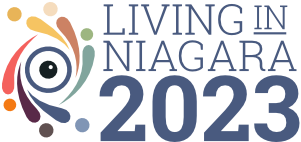A sense of community belonging is vital to the health, wellbeing and prosperity of individuals, families, neighbourhoods and our region as a whole. Social engagement and interaction among people of all ages in Niagara brings us together to build a stronger future.
National Context
Sixty-seven per cent of Canadians express a strong sense of community belonging. Compared to 20 years ago, we spend 45 fewer minutes a day socializing with others, and the average amount of time we spend with friends has dropped by 28.2%. Canadians have reduced the amount of time they spend volunteering for culture and recreation organizations by almost 30% since 1998. Across Canada, voter turnout is increasing, with the gap between older and younger voters narrowing slightly. While numbers have room to grow, more people are volunteering for political and advocacy groups, and more women are serving as Members of Parliament.
Source: Canadian Index of Wellbeing National Report, 2016
Rating
Community Belonging
How Niagara is doing in the Community Belonging Sector in 2017:
2 – We’re doing well and headed in the right direction
Amount of progress currently being made in the Community Belonging Sector in Niagara in 2017:
C – Some progress is being made
Happening Now!
- More than 30 organizations in Niagara who engage volunteers belong to RAVA (Regional Association of Volunteer Administrators). RAVA members promote implementation of best practice strategies in volunteer program management, including recruitment, screening, training, placement, supervision, recognition and evaluation.
- Voices of youth and older people are being engaged in local municipal planning. The Town of Pelham, City of Welland and City of Port Colborne are designated as members of the World Health Organization (WHO) Global Network of Age-Friendly Cities and Communities. A total of 7 local municipalities have Seniors Advisory or Age-Friendly Committees, and/or Youth Advisory Committees.
- 211 received 151,337 calls about community services in the Niagara region from 2014 to 2016. The majority of calls were from women. Most callers were seeking income support, health and legal related assistance.
- From 2014 to 2016, the Niagara Community Foundation (NCF) received a total of $6,144,697 in gifts, and awarded grants to community projects totalling $3,870,000. In the same period, the 3 United Ways in Niagara raised a total of $16,364,000 to invest in over 125 local programs for positive community change.
- In 2015 in Niagara, federal election voter turnout numbers increased to 67%, in line with the national trend. In the 2014 provincial election in Niagara, 54.4% of those eligible voted; and in the 2014 municipal election, 41.3% voted.
What’s Emerging
- From 2015 to 2017, Community Foundations of Canada examined national patterns and experiences of belonging and inclusion. When people in communities feel they belong and trust each other, we are healthier; neighbourhoods are safer; people give more of their time and money to support the community; social inclusion improves; and we are more resilient in the face of community emergencies.
- The Age-Friendly Niagara Network is engaging diverse partners to implement the Niagara Aging Strategy and Action Plan by focusing locally on inclusion of people of all ages through WHO (World Health Organization) livable community principles: transportation, housing, prosperity, safety, and health.
- Senior Pride Network Niagara began in response to a Spring 2016 Niagara-wide environmental scan that documented a dearth of programs and services aimed at older LGBT citizens, including training for service providers.
- In October 2017, the Boards of the 3 United Way agencies in Niagara announced their intent to merge into a single agency. The intent is to increase fundraising capacity, reach in the community and impact in the region.
- A variety of initiatives are working to increase inclusion in the community and economy in Niagara. Some focus areas include: refugee mental health; community gardens; youth engagement; neighbourhood prosperity; volunteer income tax preparation; inter-generational skills mentoring; and reclaiming Indigenous cultural heritage.
Suggested Action Steps
- Support inter-sectoral collaboration to address inequality, through weaving together data from existing initiatives. This will illuminate innovative solutions to reduce or remove barriers so that people can participate in the economy and community.
- Examine results of research to describe precarious employment in Niagara from the perspective of how it affects people’s ability to engage with the community.
- Build on inter-generational initiatives already underway, to better connect youth and older people through shared learning, reciprocal mentoring opportunities and social connections.
- Gather information to describe the socio-economic breadth and depth of the charitable and non-profit sectors in Niagara, including the impact of volunteers.
- Describe the impacts of social isolation on health and wellbeing in Niagara.
Indicators
- Charitable Giving
- Economic Contribution of Volunteers
- Participation in Social Activities
- Religious Affiliation
- Sense of Community Belonging
- Trust in Others
- Volunteering
- Voter Turnout









